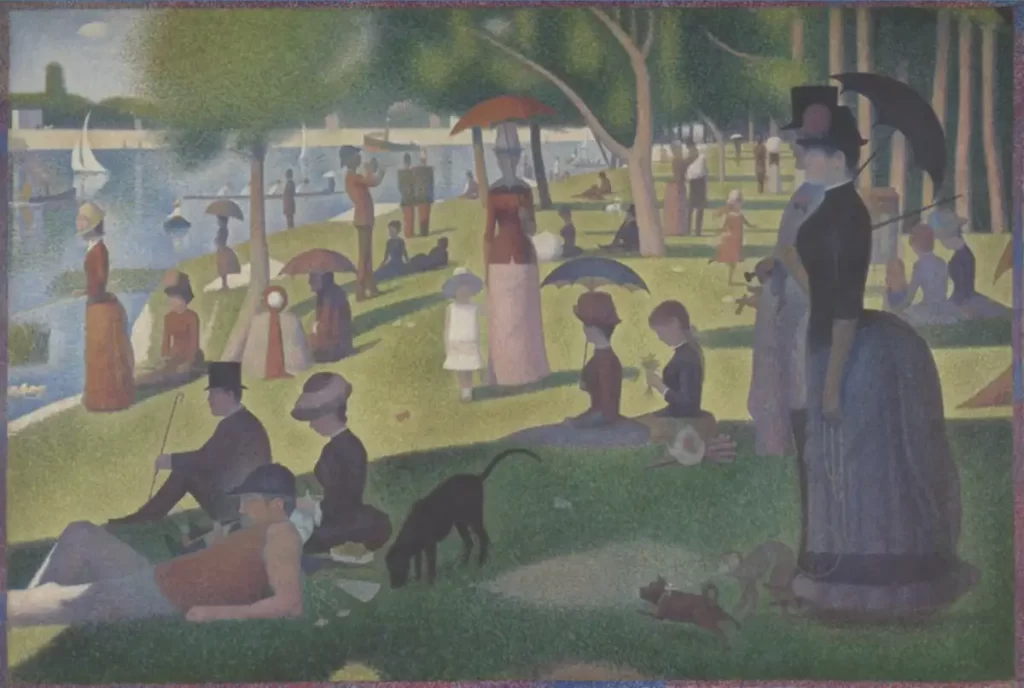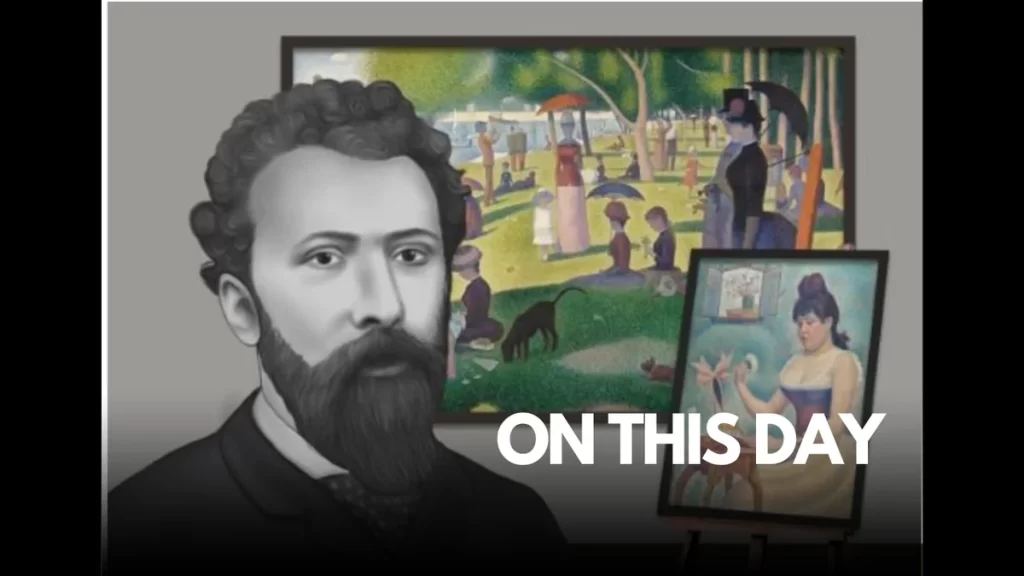A painting is not merely a replication but a perspective of the painter. Who could have justified the statement better than Georges Seurat? A prodigy since a young age, he started drawing and painting in the 1870s. A course in sculpting and painting polished the rough edges. Soon he was enlisted in the military, where he explored his artistic talents even further. His use of unwavering dots remains a marvel to the eyes. Georges Seurat died young at the age of 31. Even now, he remains a prominent figure in art history due to his natural talent for portraying the real.
Georges Seurat Art Style
Georges Seurat was a walking conundrum. He was an exquisite mix of creative sensibility and abstractive precision. It was evident in his artworks. Although he dabbled in several media, conté crayons were his absolute favourite. Painter Georges Seurat was a trailblazer in all senses. Not only did he originate neo-impressionism, but he also devised new techniques of pointillism and chromoluminarism. He was influenced by the theories of Charles Blanc, Michel Eugène Chevreul, Eugène Delacroix, and Ogden Rood.

Georges Seurat put forth the colour theory of chromoluminarism, also known as divisionism in 1884. The theory aimed to achieve the maximum optical light possible via the juxtaposition of two colours (either in dots or patches). By collating two colours (without blending) next to each other, the brain comprehends the two different lights and mixes them to create a more intense and luminous colour.

Along with his contemporary Paul Signac, Georges Seurat engendered pointillism in 1886. This style originated from his previous work on divisionism. The technique relied on the use of minute dots or points to form patterns. These dots were put extremely close to each other. Unlike chromoluminarism, this style did not focus on colour theory but rather on the technique. This style does not support blending, in fact, at times, the white of the canvas can be seen in such artworks. Due to this, pointillist paintings are often brighter than their counterparts.
Georges Seurat Paintings
Georges Seurat Artworks have been acquired by art galleries all over the globe. His work is a testament to the advancing scientific knowledge in the field of art as is evident through his contribution to the field. He is a master of reality and his paintings do an excellent job of depicting the real life of real Parisians. During his career, he curated numerous paintings, two of which are discussed below.
Bathers at Asnières, 1884
The oil on canvas painting depicts the bank of the river Seine. It features several proletarians, trees, boundary walls, and buildings. Although the scene is quite simple, it is hailed as a masterpiece by critics for incorporating aspects of colour theory and meticulous technique. He utilized the balayé technique (criss-cross brush strokes via a flat brush) to add depth and imbibe realness to it. This George Seurat painting was eagerly received by the critics and public alike and recognised as a masterpiece in the impressionist movement.

Despite painting multiple figures, the painting evokes an eerie solitariness. It seems as if each being is enveloped in their own aura, and therefore is easily distinguished. His techniques – the proportionate and strategic use of light, shade, colours, and color theory were commended.
A Sunday Afternoon on the Island of La Grande, 1884-1886
Georges Seurat’s Sunday Afternoon is perhaps the best known amongst his oeuvres. It is considered the spiritual successor of ‘Bathers at Asnières.’ While the former painting paints a scene dominated by the lives of proletarians, painter Georges Seurat narrates a bourgeois Sunday in the park. It is yet another work featuring divisionism and pointillism.

At the time, the Parisians were divided into two groups. The bourgeois did unusual things, owing to their status as the upper class. To some, this is painter Georges Seurat’s foray into politics. While the impeccable dots in the painting are a sight, Seurat detailed the border with points in inverted colours. It may be a subtle nod to the upcoming changes in classes.
Photo Courtesy – The Art Story





